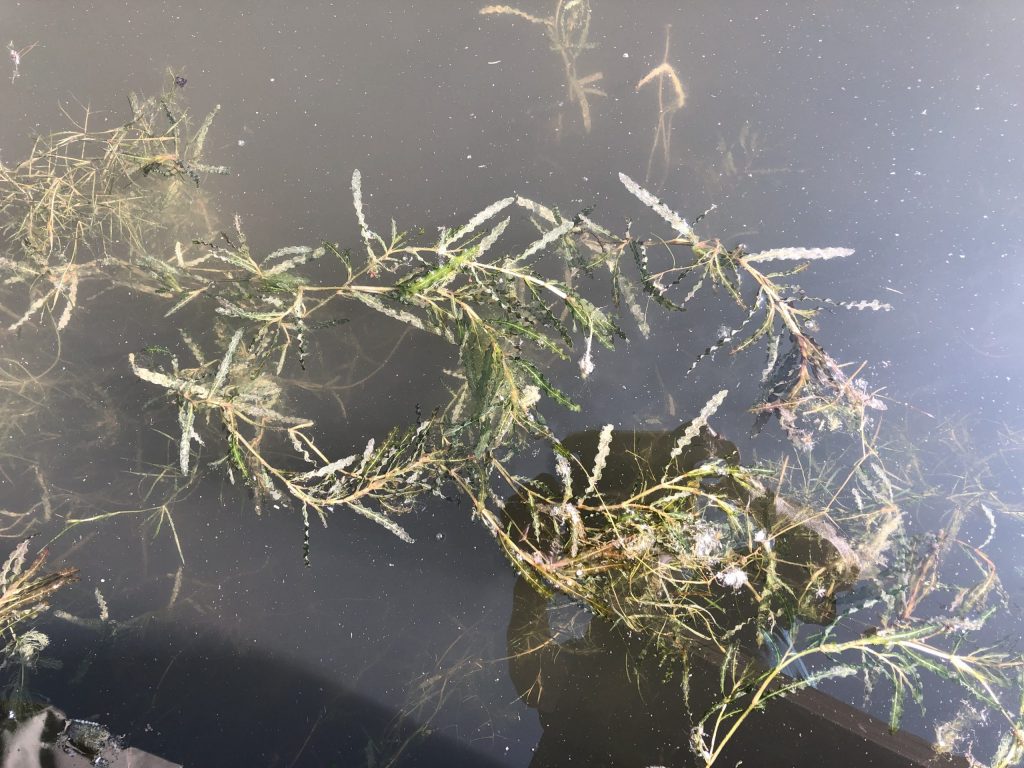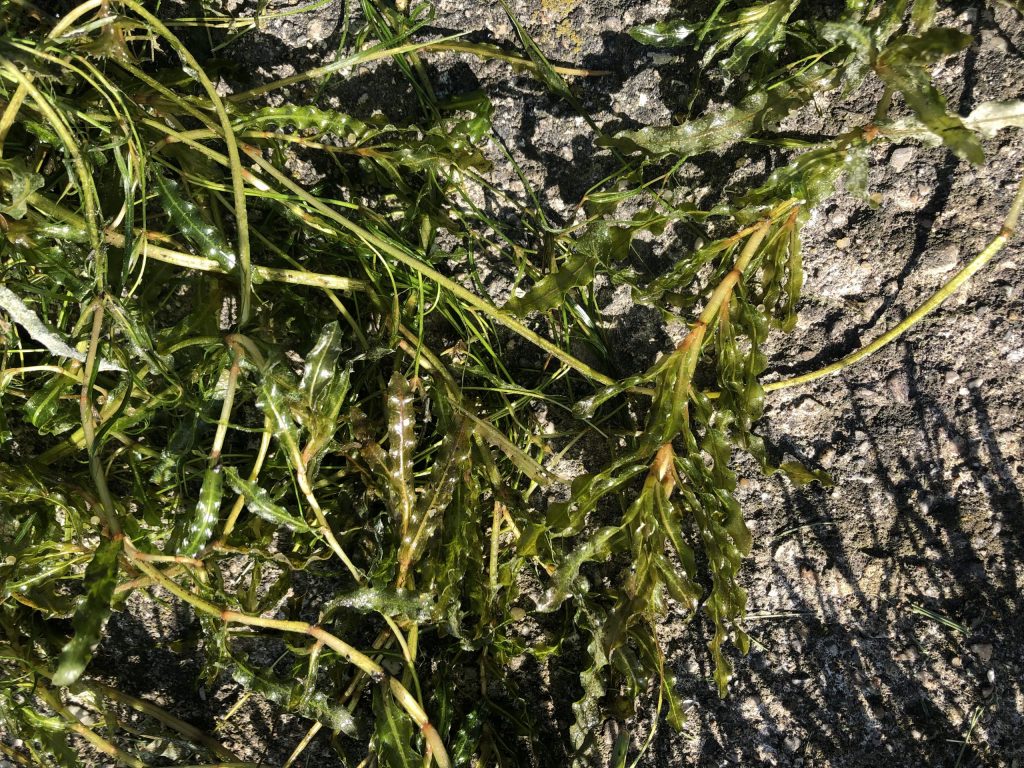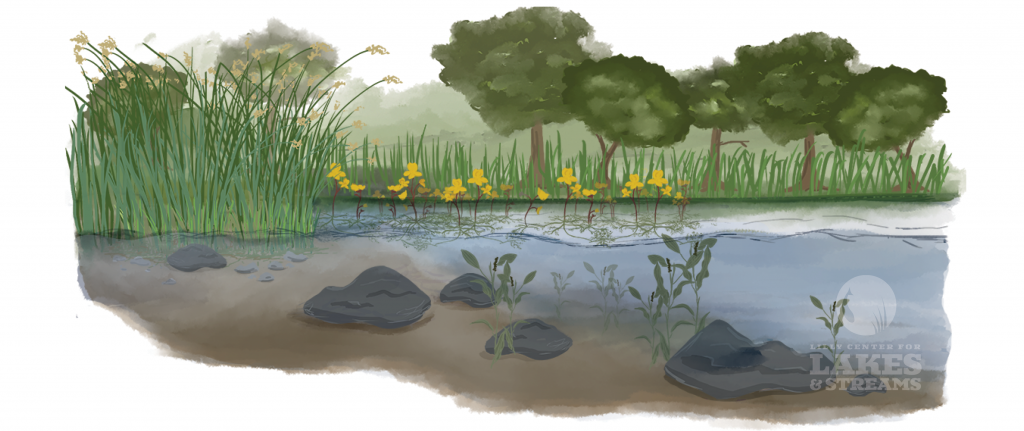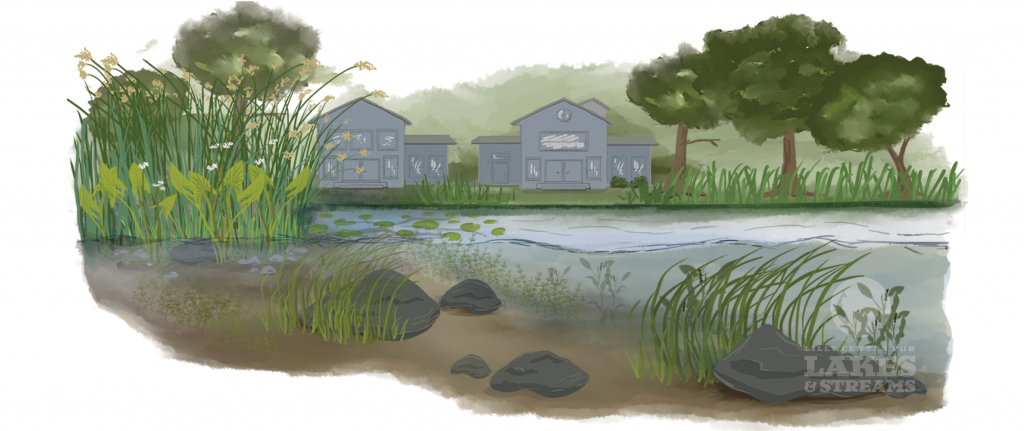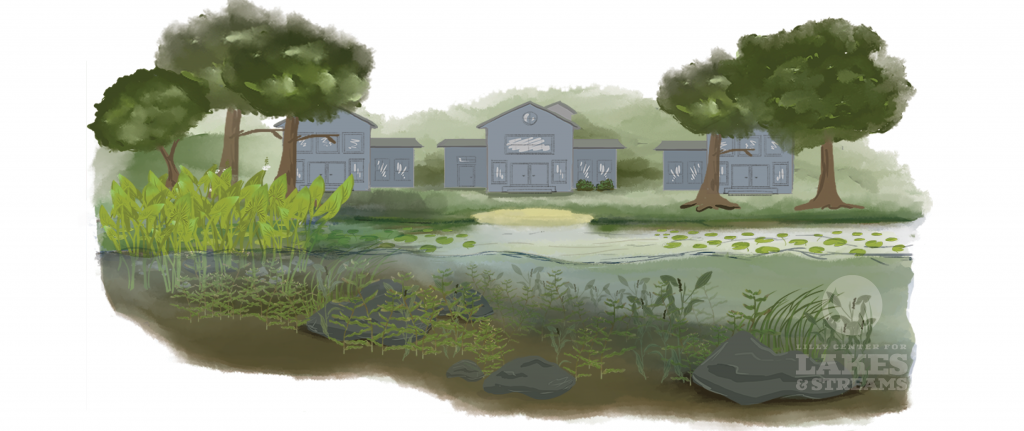Why nutrients in water cause algae and weeds to grow
Just as a healthy diet of nutrient-rich food helps a child “grow like a weed,” nutrient-rich water helps weeds and algae grow… like weeds!
In its purest state, water contains no nutrients. And yet, our bodies rely on it.
Most often, the water we drink (from the tap, bottled water or well water) contains some combination of dissolved minerals: iron, zinc, copper, iodine, calcium, phosphorus, magnesium, fluoride, sodium, potassium and chloride, to name a few. Many other substances can be dissolved in water, though, making it a carrier for all kinds of nutrients.

In freshwater lakes, two types of nutrients you’ve probably heard about are phosphorus and nitrogen. Phosphorus is vital for plants and therefore a main ingredient in most fertilizers. It’s also the most influential nutrient in freshwater aquatic ecosystems. Nitrogen typically takes the form of a gas that has no taste, color or smell. While it makes up 78% of the earth’s atmosphere, certain forms of it can also be found in soil and in water. It’s also an important nutrient for aquatic life.
But here’s the problem: too much phosphorus and nitrogen can cause aquatic weeds and algae to grow excessively.
Why are dissolved nutrients a problem?
When phosphorus and nitrogen are introduced into lakes in large amounts, weeds and algae can become out of balance with other plants and animals. They quickly absorb nutrient-rich water and use it to produce more weeds and algae. Then they overwhelm wildlife habitats, stifle native species and block sunlight from entering the lake.
Often, algae blooms that happen in early summer are a result of excess nutrients.
Spring rain washes materials that hold phosphorus and nitrogen into waterways. Once in a lake, the nutrients are “eaten” by algae. As soon as the weather warms up and algae get an influx of sunshine, they speedily bloom near shorelines (that’s where the water is warmest, typically).
There are many possible variations, but in general, this cycle (rising temperatures + nutrients = growth) repeats throughout the warmer months. Sometimes, in the right conditions, it can happen in winter!
How do nutrients get into the lakes?
There are two main ways nutrients end up in lakes: external and internal loading.
Stormwater can wash organic and inorganic materials off crops, lawns and landscaping, construction sites and from any paved surface. Flooding has a similar effect, washing nutrients (often in the form of eroded soil) from the banks of rivers, streams and lakes back into nearby bodies of water. Nutrients that enter streams or rivers are then carried into and out of lakes.
Nutrient-rich water can also be absorbed into the ground. In this case, plants help purify the water by stripping it of nutrients like phosphorus and nitrogen.
Within lakes, as plants and other organic material decay, nutrients are also being produced and released. You could say that these nutrients are developed “in-house.”
Internal and external nutrient loading is expected – even good, in moderation! But when lakes age quickly, it’s often because they get a frequent influx of nutrients from the land around them.
How does a lake age?
Eutrophication (the third panel in the gallery above) happens when a lake or pond becomes overly enriched. That leads to excessive weed and algae growth and the buildup of muck at the bottom of the lake. Gradually, the lake or pond “fills in” and eventually becomes a wetland.
Eutrophication is natural and will happen to all bodies of water over time – but humans can speed it up or slow it down.
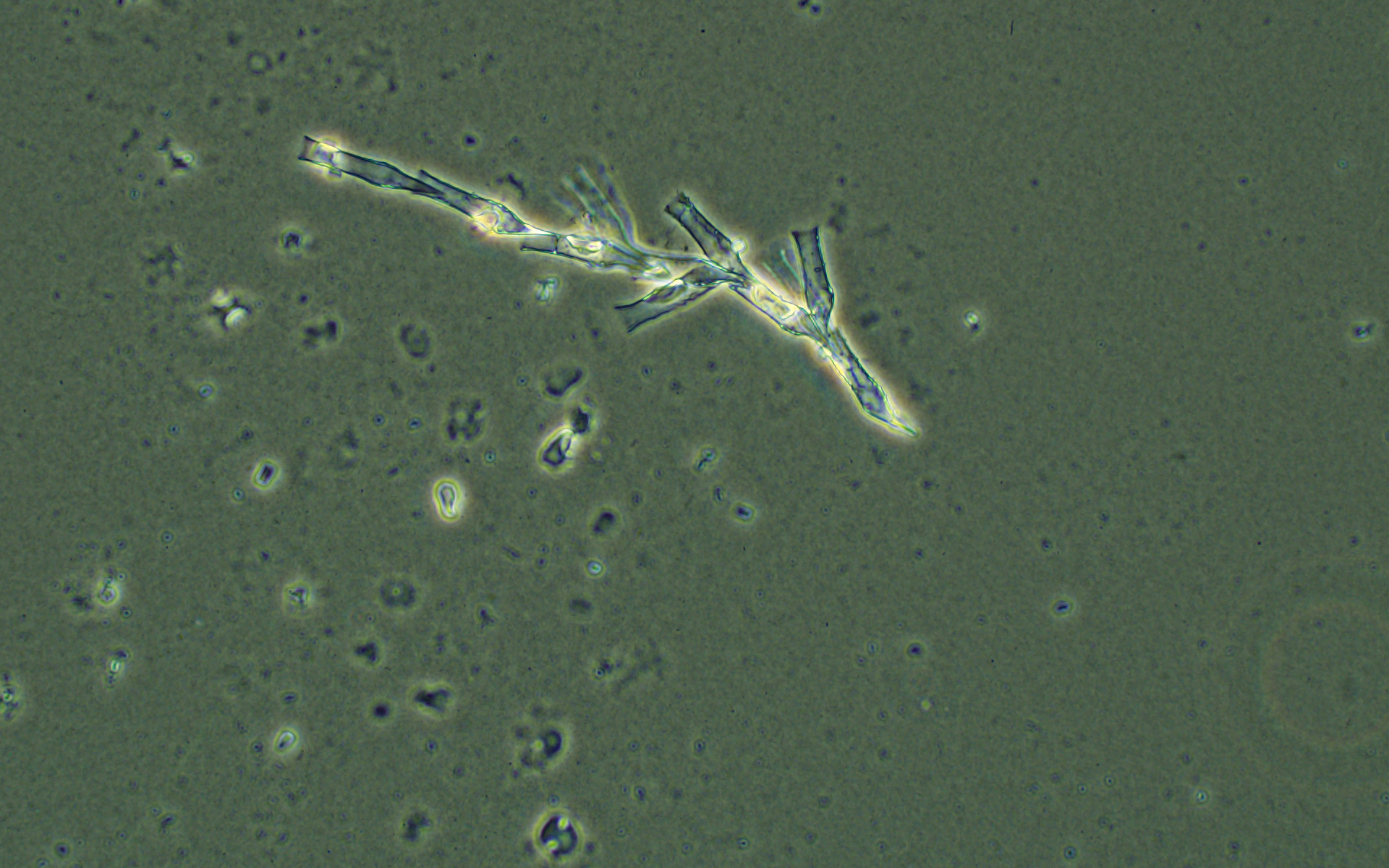
What happens when algae die?
“When the algae die, they are decomposed by bacteria. This process consumes the oxygen dissolved in the water and needed by fish and other aquatic life to ‘breathe’. If enough oxygen is removed, the water can become hypoxic, where there is not enough oxygen to sustain life, creating a ‘dead zone’.”
How can we keep excessive nutrients out of the water?
Here are a few ways to prevent excess nutrients from causing weeds to grow, algae to bloom, and your lake to quickly age:
- Only fertilize when you need to. Lawn and garden fertilizer is a common culprit of too much phosphorus and nitrogen. When it rains, any fertilizer that isn’t absorbed into the soil will wash away. Consider using fertilizer without phosphorus.
- Pick up after pets and properly dispose of yard waste. Did you know that when grass clippings, fallen leaves and branches break down, they release nutrients? Never get rid of yard or pet waste by dumping it into a lake, stream or river.
- Be mindful of your lake – and get to know your neighbors! One of the best ways to keep local lakes healthy is simply to know more about them. As you and your neighbors appreciate the lakes, you’ll be more likely to take care of them in the future.
It’s important to remember that while nutrients can enter a lake, they also already exist within it!
Ultimately, it’s impossible to have an absolutely clean and clear lake. And you probably wouldn’t want one! Many aspects of lake life, including fishing; turtle, frog and crayfish hunting; and birdwatching rely on a healthy aquatic environment that isn’t perfectly free of nutrients. Phosphorus and nitrogen (in the right amounts) are vital for life.
If our community continues to care for the lakes by being mindful of what enters them, local waterways will be enjoyed long into the future.
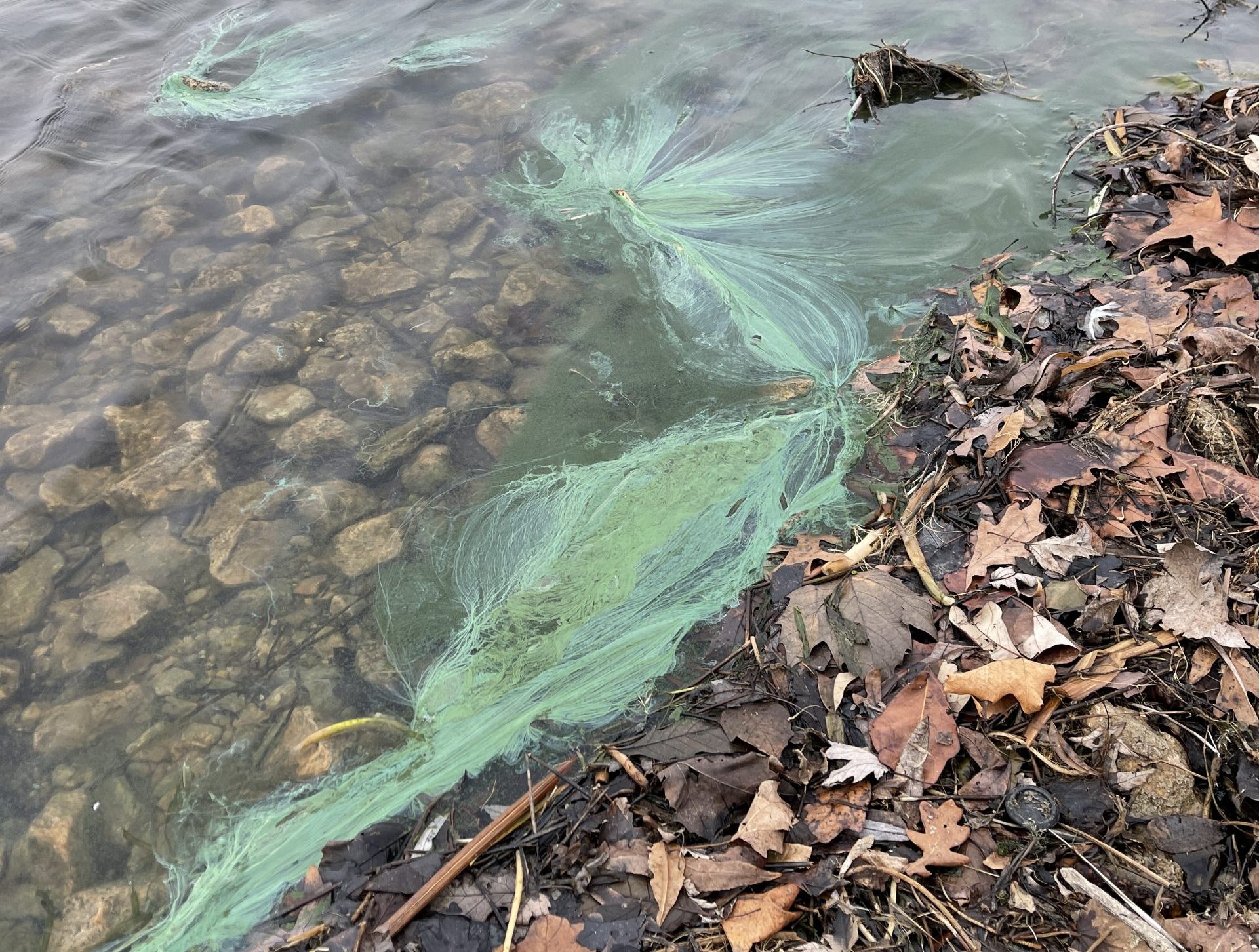
Bonus question: Are blue-green algae blooms triggered by nutrients?
Blue-green algae is a type of bacteria, but it behaves like other algae, absorbing nutrients and using them to bloom. Unlike harmless green algae, blue-green algae can produce a toxin called microcystin. By limiting nutrients in our lakes, we can also give blue-green algae fewer opportunities to bloom.
